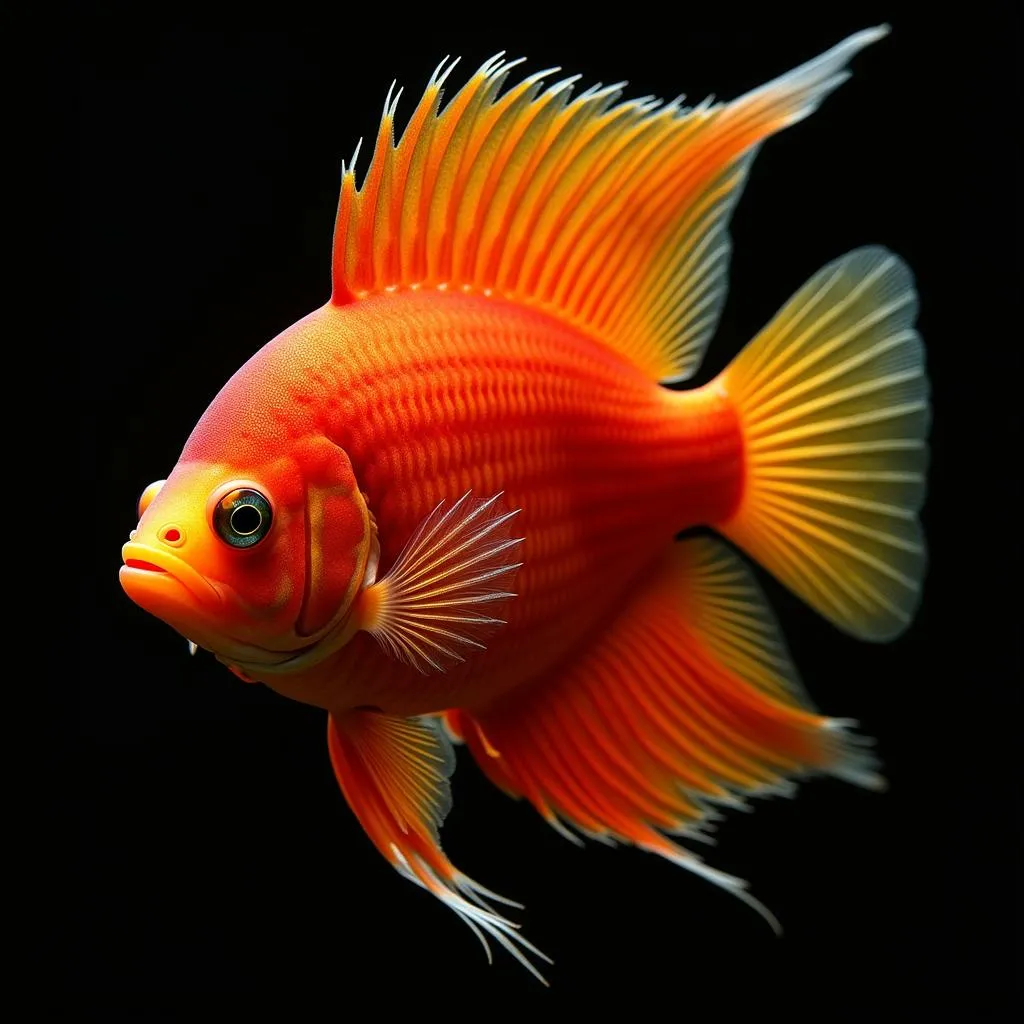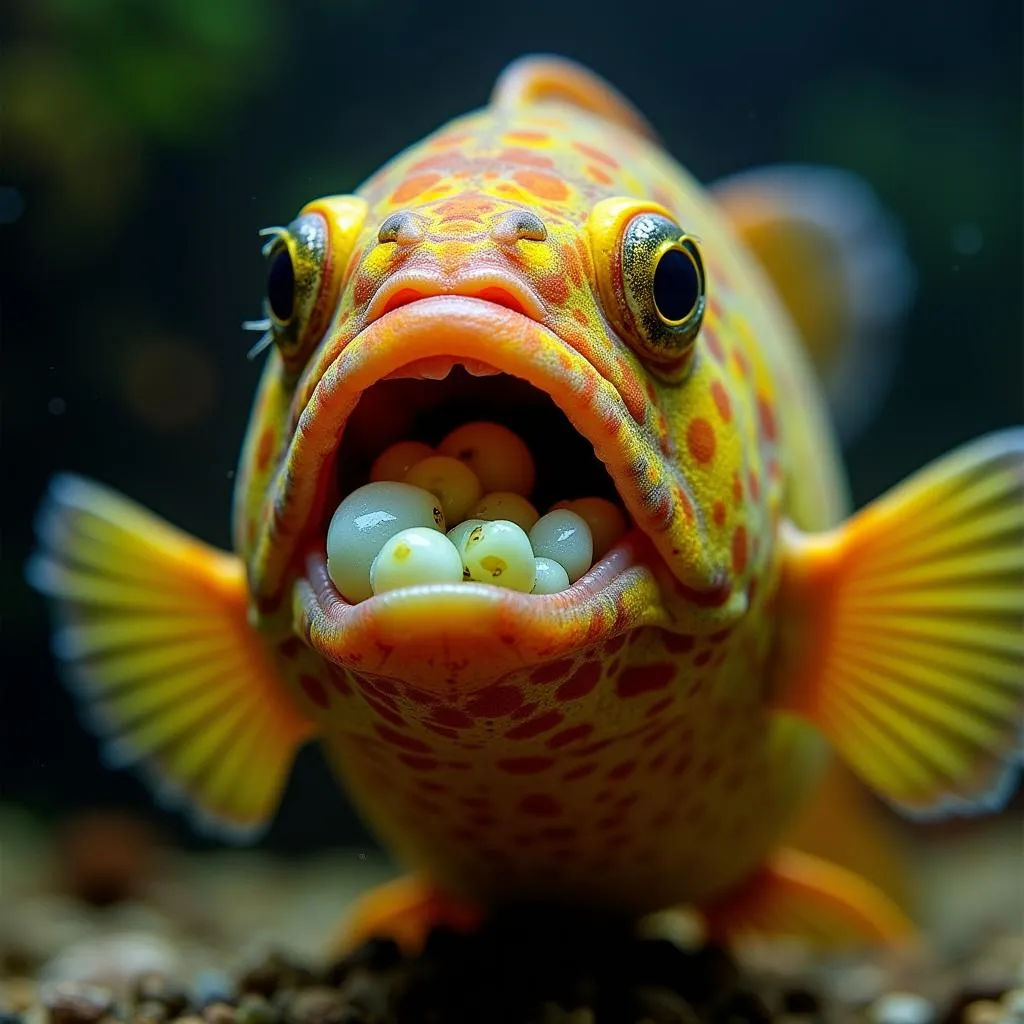African Cichlid Dragon Blood Peacock: A Captivating Jewel for Your Aquarium
The African Cichlid Dragon Blood Peacock, scientifically known as Aulonocara hansbaenschi, is a freshwater fish that originates from Lake Malawi in East Africa. Renowned for its striking coloration and elegant fins, this cichlid species has become a popular choice among aquarists worldwide. In this comprehensive guide, we’ll delve into the captivating world of the dragon blood peacock, covering its unique characteristics, care requirements, and more.
A Visual Spectacle: Appearance and Dimorphism
The dragon blood peacock cichlid is a sight to behold, particularly the males. They boast vibrant shades of red, orange, and yellow, often resembling a fiery sunset. Their elongated dorsal and anal fins, adorned with delicate filaments, add to their graceful appearance.
Female dragon blood peacocks, in contrast, exhibit a more subdued coloration, typically silver or gray with faint vertical bars. This distinct difference in appearance between the sexes is known as sexual dimorphism.
 Male Dragon Blood Peacock Cichlid
Male Dragon Blood Peacock Cichlid
Creating the Ideal Habitat: Tank Setup and Water Parameters
To ensure the well-being of your dragon blood peacock cichlids, it’s crucial to replicate their natural habitat as closely as possible. A spacious tank is essential, with a minimum size of 55 gallons recommended for a single male and several females.
Water quality is paramount. Maintain a temperature range of 77-82°F (25-28°C), pH between 7.8 and 8.6, and moderate hardness. Regular water changes of 25% every two weeks are essential to maintain optimal water conditions.
Mimicking Lake Malawi: Aquarium Decor and Substrate
Dragon blood peacocks thrive in environments that mimic the rocky shores of Lake Malawi. Use a sandy substrate and incorporate plenty of rocks, caves, and flowerpots to create hiding spots and break up the line of sight.
Live plants, though not essential, can enhance the aesthetics of your aquarium and provide additional cover for your cichlids. Choose hardy species that can tolerate the alkaline water conditions.
 Dragon Blood Peacock Cichlid in Aquarium
Dragon Blood Peacock Cichlid in Aquarium
A Carnivorous Palate: Feeding Your Dragon Blood Peacock
In their natural environment, dragon blood peacock cichlids are primarily insectivores. Replicate this diet in captivity by offering a varied menu of high-quality cichlid pellets, supplemented with live or frozen foods such as brine shrimp, bloodworms, and mysis shrimp.
Avoid feeding your cichlids beef heart or other mammalian proteins as these can lead to digestive issues.
Social Dynamics: Compatibility and Tank Mates
Dragon blood peacocks are relatively peaceful cichlids, but they can be territorial, especially during breeding season. It’s best to keep them in a species-only tank or with other peaceful Malawi cichlids of similar size and temperament.
Suitable tank mates might include other Aulonocara species, such as the yellow peacock or the strawberry peacock. Always monitor their behavior closely for signs of aggression.
The Dance of Courtship: Breeding Dragon Blood Peacocks
Breeding dragon blood peacocks is a rewarding experience. When ready to spawn, the male will intensify his coloration and display elaborate courtship rituals to entice a female.
The female, once receptive, will lay her eggs in a pre-dug pit. She then picks them up in her mouth and the male fertilizes them externally. The female will incubate the eggs in her mouth for about three weeks before releasing the fry.
 Female Dragon Blood Peacock Holding Eggs
Female Dragon Blood Peacock Holding Eggs
Conclusion
The African cichlid dragon blood peacock is a stunning addition to any freshwater aquarium. By understanding their needs and providing a suitable environment, you can enjoy the beauty and captivating behavior of these jewels of Lake Malawi. Remember to choose tank mates carefully, replicate their natural diet, and provide ample space for these active and engaging fish.


